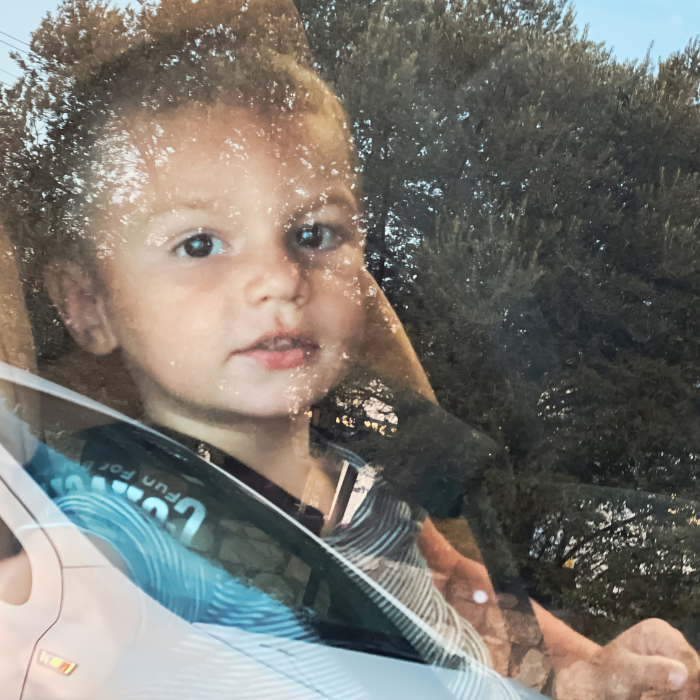
Your child’s language development is unique, but there are some fun ways of encouraging your budding wordsmith to get those words flowing. Here are 10 great starters.
There’s nothing more adorable than a toddler learning to talk. That much-anticipated first word gradually becomes a non-stop stream of funny statements from our chatty toddlers. But often parents worry about whether their child is chatting enough, acquiring enough new words, and generally developing at the ‘normal’ rate. Be reassured! Language develops differently for each child, and often we underestimate how much there is for our kids to learn. Vocabulary is only one of the many skills our little ones have to master before they can have a decent conversation. The best thing you can do is to keep talking and make it fun.
talk, talk, talk
Children understand many more words than they can actually speak, so to increase their vocabulary they need to hear you using it. Talk about activities as you do them with your child. You may feel as though talking to yourself looks a bit crazy, but eventually your child will start to join the conversation too. Research has shown that television, even ‘educational’ programmes, has no benefits on language development for very young children. In fact, some research has shown it has a detrimental effect on language acquisition. Person to person interaction is the key.
hide and seek
This traditional favourite for preschoolers is also a great opportunity for language development. Whether hiding people or toys, talk as you look for them and introduce concepts such as under, in, near and behind. “Is teddy under the bed?”, “No!”, “Is he in the box?”, “Yes!”. Don’t worry if it’s just you doing the talking, they will be absorbing it all and loving the excitement.
listening walk
Take a walk and talk about sounds you hear. Try making the sounds together. Initially it may help to put your hand behind your ear as you listen to emphasise to your child what you are doing.
baby signing
People naturally use gestures, facial expressions and body language to communicate from a very young age. Babies and toddlers between 6- to 30-months, and children with language delays, benefit the most from baby sign. Research has shown that using simple signs, alongside spoken words, helps your child learn to talk. Try starting with this easy sign: touch your fingertips to your lips and say “eat”. Making up your own signs is fun too! www.babytalk.co.nz is a helpful website.
simple story time
Try reading at, or only slightly above, your child’s speaking level. If they are saying one or two word sentences, simplify the text and use two to three word sentences, e.g. “Bye bye pussycat”. If you use the pictures and keep it at your child’s level, they will get more involved. Very wordy stories can be overwhelming and hard to keep up with for very young children.
in the bag
Place a few familiar items into a bag. Keep the items hidden and describe what one of them looks and feels like. For example, “It’s very soft”. Ask them to guess what it is. As your child’s vocabulary grows, they can have a turn at describing too. Add interesting and unusual items as the child gets better at the game.
adventure word search
Take a day trip and introduce new vocabulary to your child. Zoos, museums, beaches, forests or aquariums are great places to try. Afterwards, read books on the same topics or make a story using photos from your day trip to reinforce those new words.
sleepy talk time
Just before bed, have a sleepy talk time where you quietly discuss the day with your child and what you might do tomorrow. This has the double benefit of helping them wind down and having some great one-on-one talking time with no distractions. Low lighting and snuggling up together makes for a very special talking time.
fun with sounds
Speech sounds develop over the first 8 years of your child’s life. Have some fun with the sounds your child is developing and practise new ones by emphasising and playing with them. Play with cars and make a loud “mmmmmm” driving sound. Pretend to sleep and make a snoring “shhhh shhhh” sound. Tap a toy hammer on various objects and make different “ttt ttt” high and low sounds.
topic of the week
Pick a few words or a concept to focus on for a week. Use these words as much as possible, collect objects to put in a topic box, read books from the library, and play games. Some topics might be animals from the farm, colours, numbers, polite words (please and thank you etc) or single words for less verbal babies and toddlers such as eat, potty, dog. The aim is to repeat, repeat, repeat!
if you’re worried
Language development does not always progress smoothly. It isn’t uncommon for children to have problems in a number of areas. Understanding language, making age-appropriate speech sounds, stuttering, and refusing to speak are some areas which children may need help with. Also, having voice difficulties, such as sounding hoarse, nasal, too loud or quiet, or an unusual-sounding voice, could need addressing. Getting your child’s hearing checked is the first important step, as many children have language difficulties because of undiagnosed hearing problems.
If you have had their hearing tested, have tried the ideas (left) for a couple of months and are still having some concerns, then take the next step: contact your local Group Special Education office, or talk to your child’s GP or Plunket nurse. Group Special Education is a department of the Ministry of Education and provides free services to a wide range of children who are having difficulties. If you are unsure, give them a call and ask for advice. The earlier problems are assessed and dealt with, the better it will be for your child.
‘Much more than words’ is a document put out by the Government outlining language development, areas of difficulty, activities to use with children and steps to referral. It can be downloaded at www.minedu.govt.nz
KELLY EDEN-CALCOTT IS A WRITER AND MUM TO THREE GIRLS. SHE IS A TRAINED PRIMARY TEACHER WITH DEGREES IN EDUCATION AND EARLY INTERVENTION, WORKING WITH PRESCHOOL CHILDREN WITH SPECIAL NEEDS.








